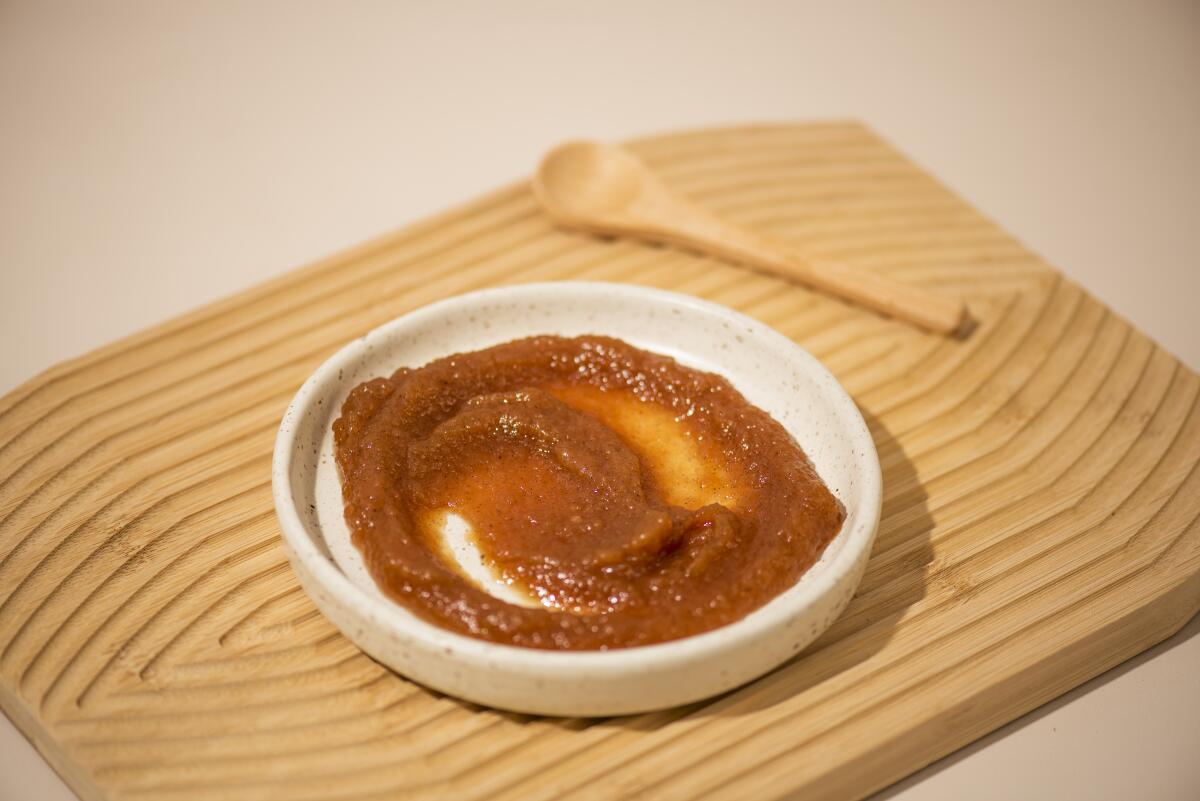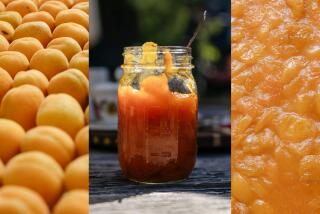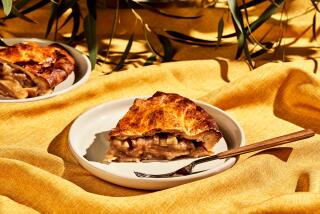Why making apple butter is different from making jam

This story is a component of the feature “Seasons of Preserves: Apple Butter,” which is part of a four-part series on preserving fruit at home called “L.A. in a Jar.”
When making fruit jam, which is technically small chunks of fruit cooked with sugar, stone fruit works well because the fruit is soft enough to break down during cooking while also retaining some pieces for a pleasant, chewy texture. Apples, however, won’t soften as much as you need them to by the time the jam is done, so you must cook the apples until very soft first, then purée them. This purée, cooked with sugar, is what makes a fruit butter — and apples are often or always preserved this way.
So, to make apple butter, you need to cook and purée your apples before you add the sugar and lemon juice needed to preserve them. Here are the steps:
First things first: Wash the apples. Apples from the market most likely have a little dirt on them, and you’ll be using the whole fruit — skins, cores and all — so you want to make sure they’re clean. No need for soap or scrubbers, as that would damage the fruit; simply run the apples under some warm tap water and use your fingers to gently loosen any dirt on the outside.
Next, you want to prepare the apples to be puréed. To start, quarter the whole apples, then toss into a large saucepan and cover with 1 inch of cold water. Bring the water to a boil, and then reduce the heat to maintain a gentle simmer. Cover the pot slightly with a lid and cook the apples until you can pierce the pieces easily with the tip of a paring knife.
Once the apples are soft, use a slotted spoon or spider to transfer them, in batches, to a food mill set over a large bowl. Then process the apples in the food mill, discarding the skins and seeds after each batch. Using a food mill is the best way to achieve a great texture to the apples while also allowing you to cook them in large, skin-on pieces, since the mill will strain out the skins, seeds and tough core fibers of the apples by itself. (If you don’t have a food mill, you can absolutely use a food processor to purée the apples, but you’ll have to peel and core the apples before cooking them. Faced with that task, don’t you see how a food mill might be worth it after all?)
Once the apples are processed into a purée, it’s time to start making your apple butter by adding sugar, lemon juice and salt, just like the process of making stone fruit jam.
More to Read
Eat your way across L.A.
Get our weekly Tasting Notes newsletter for reviews, news and more.
You may occasionally receive promotional content from the Los Angeles Times.











